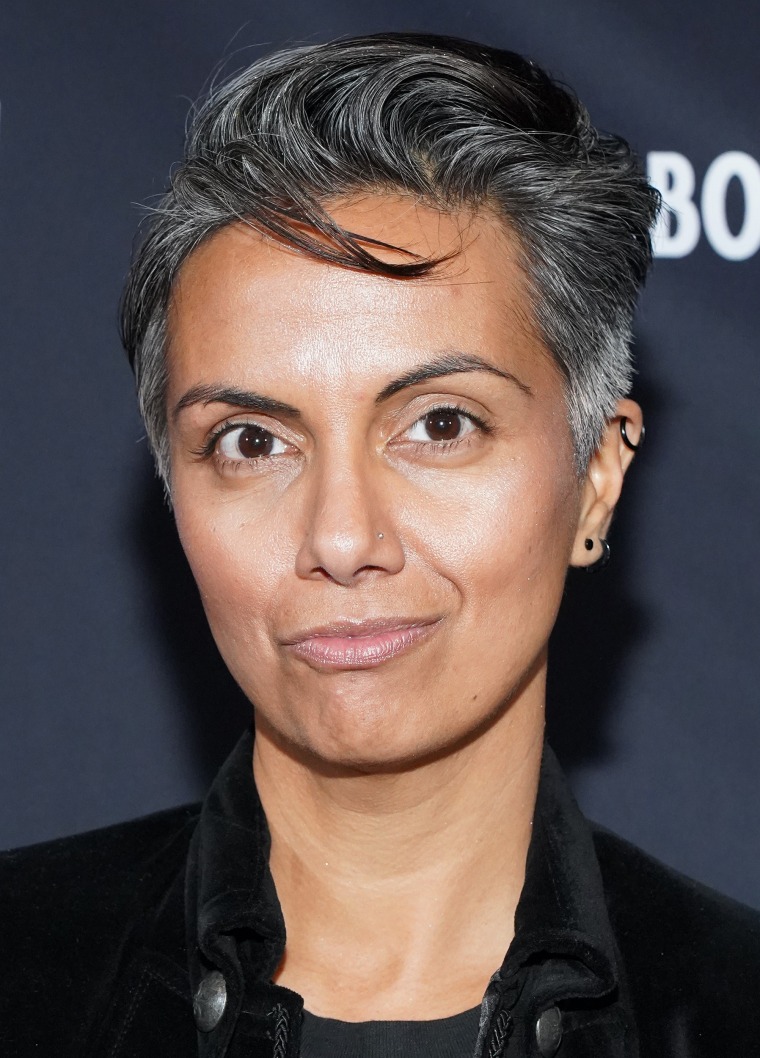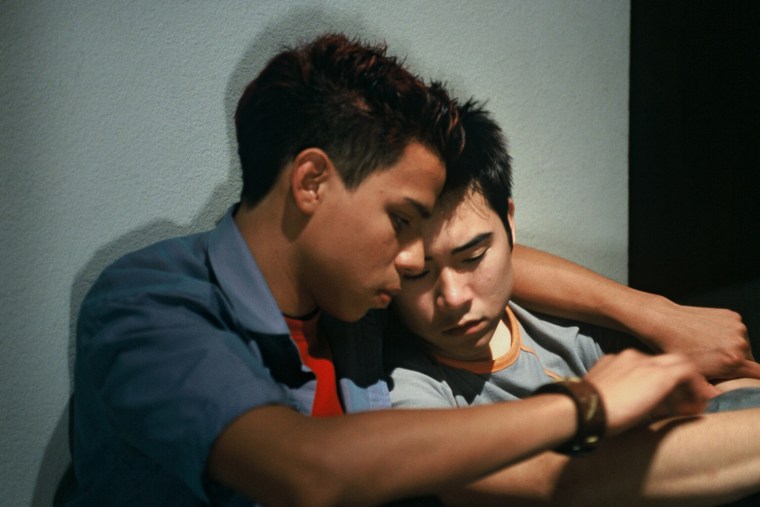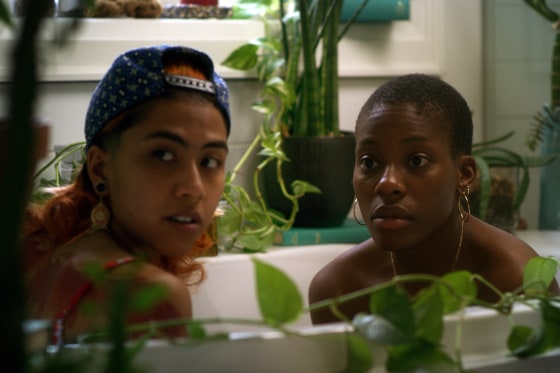Actor and director Fawzia Mirza has dedicated her career to creating stories about LGBTQ Muslim Americans, often drawing on her own experiences as someone who is both queer and Pakistani American.
“One of my missions is that I center queer characters of color,” Mirza, who wrote and starred in the South Asian queer romantic comedy “Signature Move” in 2017, told NBC Asian America. “I center queer protagonists who are Muslim and all the stories and complications that come around that.”
Her career path has also meant she has had a firsthand look at the challenges filmmakers who want to create movies with LGBTQ Asian American characters face. That’s why when Mirza first saw the results of a recent University of Southern California study on Muslim representation in film, she read the finding that only one character in the 200 films studied identified as both Muslim and LGBTQ with disappointment — but not surprise, noting that she often gets pushback from potential financial backers that her stories are “too complicated,” she said.

“We love watching complicated protagonists, but the subtext of the complicated protagonist is that they're white, and their background is Christian, and maybe they’re straight,” Mirza said. “When you are told it is complicated to tell this story, really what we are being told is, ‘You know that the mainstream isn't ready for us to have those complications.’”
Those struggles aren’t limited to just Muslim American filmmakers or storylines. Another recent study on Asian American representation in Hollywood found that only 3.4 percent of Hollywood’s top-grossing movies featured Asian American or Pacific Islander leads and that none of the films studied featured an LGBTQ Asian American or Pacific Islander lead. That number is an indication of how hard it is to get producers and studios to invest in stories about queer Asian Americans in particular.
“Creating queer Asian content is hard because you're really hitting on two major issues of America that are challenging,” said director Quentin Lee, who has been making films with LGBTQ Asian characters since the late 1990s.
“One is gender and sexuality — which is still hard for the general American to accept. The other is Asian American identity,” he said, adding that the recent rise of anti-Asian violence in the United States is further proof of the ways Asian American and Pacific Islander communities are still viewed as outside the mainstream. “So it’s gender and sexuality bias plus racism.”
Lee’s 2004 feature film “Ethan Mao,” a psychological thriller about a gay teen who is kicked out of his home by his homophobic stepmother, is now considered a cult classic. The director is currently trying to get financing for his film “Last Summer of Nathan Lee,” which is about an Asian American teen with a terminal illness who is determined not to die a virgin. The film is told from the perspective of Nathan’s best friend, who is gay.

Experts say there are several reasons why studios have traditionally shied away from queer Asian American content, primary among them being a lack of familiarity with Asian American and Pacific Islander communities.
“The major studios are very conservative; they rely on what they already believe will make money instead of thinking about different models,” Karen Leong, associate professor of women's and gender studies and Asian Pacific American studies at Arizona State University, said.
While fans often pay the most attention to the talent and lines that are delivered in front of the camera, Leong said it’s just as important to promote diverse voices behind the scenes to ensure that Asian American queer stories are being told in ways that are culturally accurate. If screenplays are “not written by people who understand that they're not going to come across as authentic, they're going to come across as caricature,” she said.
Another major issue is that it’s difficult to get funding from American studios for LGBTQ films in general. In 2019, GLAAD found that representation for LGBTQ people in films tended to be minimal, with most characters getting less than three minutes of screen time.
“This is actually a structural issue of heterosexism,” Leong said, adding that the lack of Asian LGBTQ films and roles reflects “the ongoing structural ways that Hollywood is organized to favor young males — and those males are assumed to be cis, hetero, white and affluent.”
Hollywood’s conservatism when it comes to queer stories along with the lack of knowledge about Asian American and Pacific Islander communities also results in a sense of doubt that there is an audience for stories about queer Asian Americans who grew up in the West.
“Because we’re still seen as perpetual foreigners, there's this assumption that Asian Americans are still going to be more interested in watching something like a Korean drama over something American starring Asian Americans,” Leong said.
Filmmakers also have to contend with the belief that many Asian Americans and Pacific Islanders are devoutly religious and therefore reluctant to buy tickets or otherwise support a film with an LGBTQ storyline.
“Of course there are some people who are going to be offended, but we don't seem to really mind doing that when it comes to white Christian LGBT narratives or narratives involving all these other religions,” Mirza said. “But for some reason, we're sort of like moving backwards when it comes to telling queer stories in the Muslim context.”
Mirza’s latest project is a short film in which both faith and sexuality are central to the plot. “Noor and Layla” tells the story of two lesbian women — one a Nigerian Muslim and one a Muslim of Iranian-Filipino descent — through “five different moments in their relationship marked by the Muslim call to prayer,” as she described it.
Because of the unique barriers that LGBTQ-centric films face, Mirza said it’s critical that people support them when they can.
“People ask, ‘How do we support these films?’” Mirza said. “I always say, ‘Buy a ticket, buy a ticket, buy the book, spend the money. Use your dollars to support because that does matter.’”
